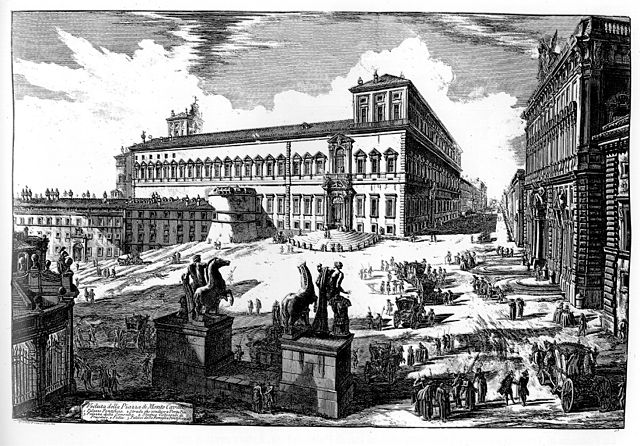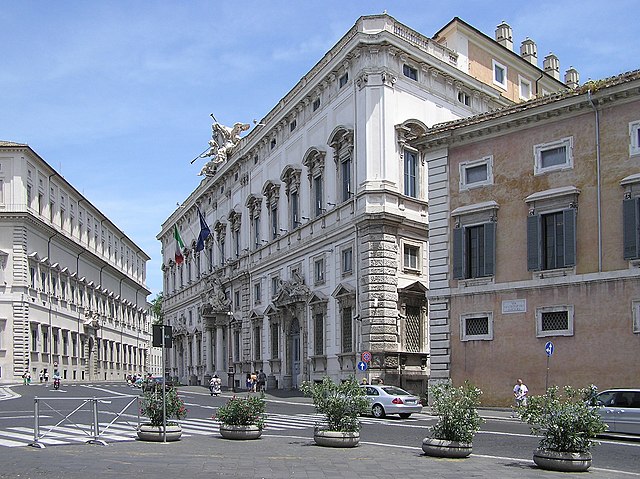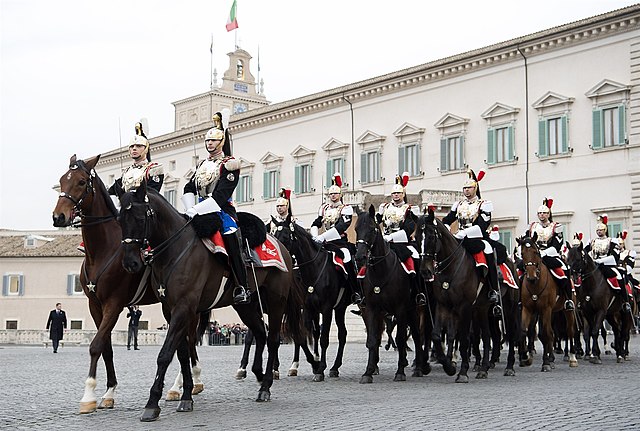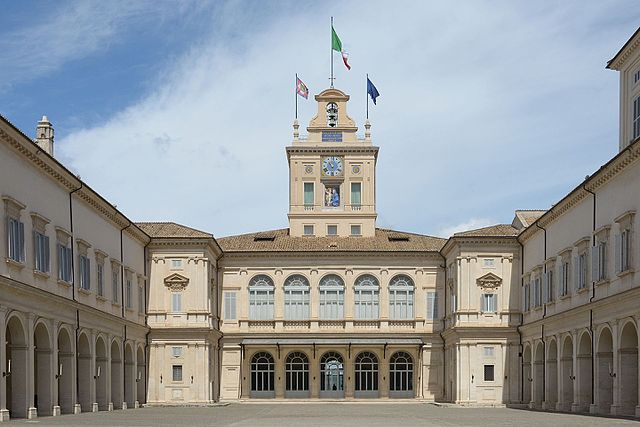The Quirinal Hill is one of the Seven Hills of Rome, at the north-east of the city center. It is the location of the official residence of the Italian head of state, who resides in the Quirinal Palace; by metonymy "the Quirinal" has come to stand for the Italian president. The Quirinal Palace has an extension of 1.2 million sq ft (110,000 m2).
A mid-18th century etching of the Palazzo del Quirinale by Giovanni Battista Piranesi: The colossal Roman "Horse Tamers" or Dioscuri are in the foreground, but the obelisk from the Mausoleum of Augustus (erected 1781 – 1786) has not yet been set up between them.
An etching of the Hill, crowned by the mass of the Palazzo del Quirinale, from a series I Sette Colli di Roma antica e moderna published in 1827 by Luigi Rossini (1790–1857): His view, from the roof of the palazzo near the Trevi Fountain that now houses the Accademia di San Luca, substituted an imaginary foreground garden for the repetitious roofscape.
The Constitutional Court of Italy in Palazzo della Consulta, is among the Quirinal Hill government buildings in Rome.
Piazza del Quirinale
The Quirinal Palace is an historic building in Rome, Italy, one of the three current official residences of the President of the Italian Republic, together with Villa Rosebery in Naples and the Tenuta di Castelporziano, an estate on the outskirts of Rome, some 25 km from the centre of the city. It is located on the Quirinal Hill, the highest of the seven hills of Rome in an area colloquially called Monte Cavallo. It has served as the residence for thirty popes, four kings of Italy and twelve presidents of the Italian Republic.
The palace seen from Piazza del Quirinale
The palace and garden by Giovanni Battista Falda in 1683
Cuirassiers, honor guard of the president of Italy, outside the palace
The Courtyard of Honour








